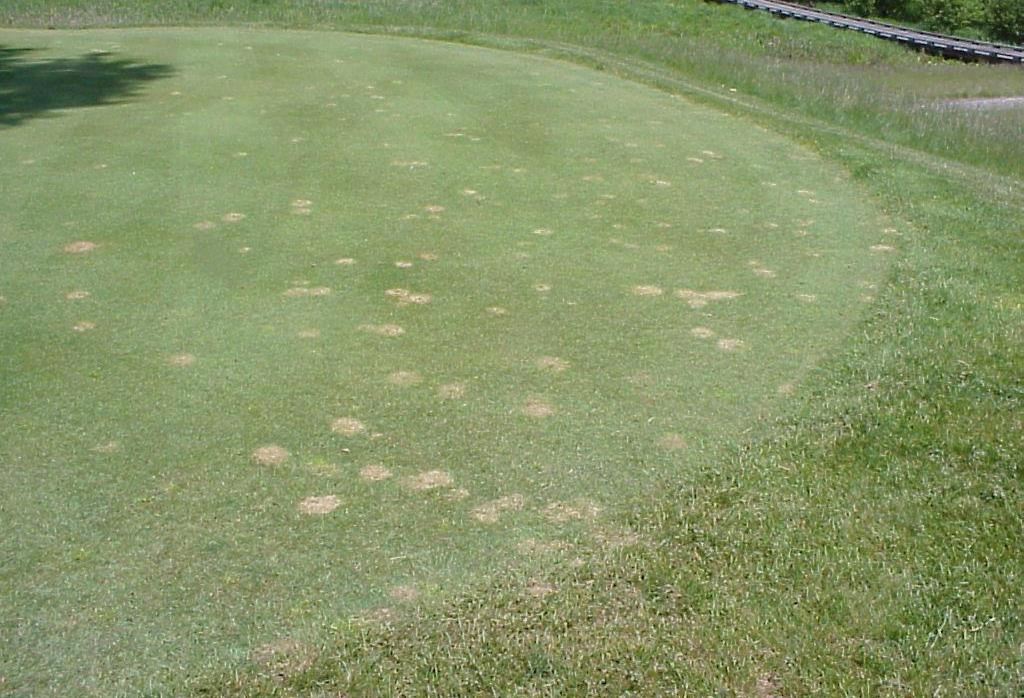Ant mounding activity is reaching peak levels right now in Michigan. Typically, ant mounding increases in May and June, then slowly declines in July and August, so that if the ants are undisturbed the number of mounds present in September may be one half one third of what was present in June. Nearly 100% of the ant mounds on golf courses in Michigan are made by one species: the Turfgrass Ant (Lasius neoniger). This ant is pretty small: workers are only 3 mm long, and mounds are usually 1 – 2” wide. Still, they can be so abundant that the mounds interfere with putting or stifle the turf under them. For these reasons the turfgrass ant is usually suppressed on tees, greens and fairways. In golf course roughs and home lawns it is considered beneficial because the ants are good predators that help keep turf pests under control. 
You have probably noticed that most of the ant mounds are along the edges of fairways, tees and greens, with much less or no ant mounding in the center. This is because the surrounding turf supports many colonies of turfgrass ants that will establish satellite colonies on the fairways, tees and greens. Insecticide applied to suppress ant mounding should also be sprayed 10 – 20’ into the surrounding rough to slow the spread back onto the short-mowed turf areas.
In research funded by the Michigan Turfgrass Foundation we have evaluated insecticides used on golf courses in Michigan to suppress ant mounding. Superintendents can expect 6 months of ant suppression following a single application of Aloft, Arena or Meridian at the highest labeled rate when applied in May or early June. In ¼-fairway plots (replicated 6 times) we were able to reduce ant mounding by 90% compared with only a 50% reduction in our standard-sized plots (10’ x 20’). Efficacy was reduced in the smaller plots because the ants spread back into the plots from surrounding areas. Merit and other imidacloprid products may also work well for suppressing ants, but the results tend to be less consistent. This means that if golf course superintendents treat 20’ beyond the edges of tees, greens and fairways, it will reduce re-colonization and dramatically improve ant control, especially along the edges of fairways, tees and greens. These insecticides are also used for grub control (Japanese beetle and European chafer). If applied in late May or early June they should control grubs and provide ant suppression. However, late May is too early to apply an insecticide for European crane fly, so a second application may be needed in mid-September for crane flies on some golf courses in the Detroit and Grand Rapids areas. Spot-treating tees and greens with a surface spray of a pyrethroid insecticide (Talstar, Scimitar, DeltaGard, Astro, Tempo, and others) will provide a week or two of suppression before the mounds begin to appear again.
Dr. David Smitley
Michigan State University